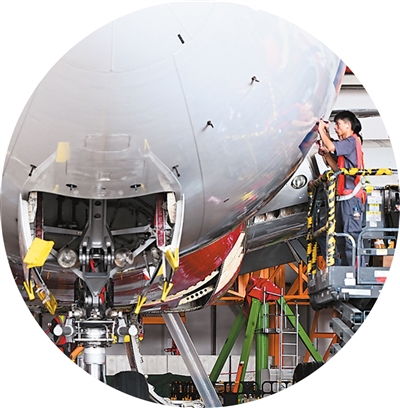Beyond purchasing "Made in China" goods, overseas buyers have increasingly turned to Chinese services in recent years.
From 2014 to 2024, China's total services exports grew from $219.1 billion to $445.9 billion, representing an average annual growth rate of 7.3 percent. The sector recently gained further momentum as nine government departments, including the Ministry of Commerce, introduced new policies and measures to promote services exports.
The trend is visible on platforms like 1688, Alibaba's wholesale marketplace, which has launched a cross-border supply chain zone to attract service providers supporting international buyers.
"Over the past two or three years, we've noticed that a significant share of goods on our platform flow through border trade hubs such as Pingxiang in Guangxi, Horgos in Xinjiang, and Suifenhe in Heilongjiang before reaching overseas markets," said Yue Hongfei, deputy director of the 1688 industrial research center. "This segment now accounts for more than 40 percent of our platform's transactions."

A technician examines an aircraft at the one-stop aircraft maintenance base of Hainan Free Trade Port in south China's Hainan Province. (Xinhua/Yang Guanyu)
The surge reflects not only rising overseas demand for Chinese goods, but also a growing need for cross-border services.
Completing international e-commerce transactions requires seamless coordination in logistics, payments, customs clearance, and quality inspection, opening new opportunities for service providers.
"That's why we want to establish a dedicated cross-border service zone on 1688," Yue added, noting that AI technologies are accelerating the integration of goods and services trade on cross-border e-commerce platforms.
This pattern captures the current state of China's services trade: robust demand, vast market potential, and solid policy support.

Tourists from Russia take a selfie at Ciqikou ancient town, Shapingba district, southwest China's Chongqing Municipality. (Photo/Sun Kaifang)
From January to August this year, China's total services trade reached around 5.25 trillion yuan (about $735.4 billion), up 7.4 percent year on year. Services exports rose 14.7 percent to more than 2.3 trillion yuan, while the deficit in services trade narrowed by 228.07 billion yuan from a year earlier.
Driving this growth is the rising competitiveness of high-tech and high-value-added services. China's knowledge-intensive services exports reached nearly 1.18 trillion yuan in the first eight months, up 9.4 percent year on year and accounting for more than half of total services exports. Telecommunications, computer, and information services have become key growth engines.
"The distinctive characteristics of services exports highlight their strategic value to China's economy," said Liu Bin, director of the financial research office at the China (Shanghai) Pilot Free Trade Zone's research institute. "Unlike goods trade, services exports are knowledge-intensive, digitally driven, and deeply integrated with other sectors."
As digital technologies merge with service scenarios, new models are emerging—integrating online platforms with offline delivery, industrial capital with services exports, and cross-border data flows with services exports. China's services exports are becoming increasingly embedded in global service value chains.

Photo shows a peacock-shaped lantern in Zigong, southwest China's Sichuan Province, one of China's first 13 national cultural export bases. (Xinhua/Zhang Xiaoyu)
In Zigong, southwest China's Sichuan Province, activities of the Zigong international lantern festival are helping cultural products, intangible heritage crafts and cultural services reach global audiences.
In Xiamen, southeast China's Fujian Province - one of China's earliest aircraft maintenance hubs - Xiamen Customs supervised a total of 110 inbound aircraft for maintenance procedures in the first half of 2025. The import and export value of bonded aviation maintenance operations outside the customs supervision areas exceeded 98.05 billion yuan, up 29.4 percent year on year.
However, the Ministry of Commerce acknowledges that challenges remain. China's services sector still has limited international exposure, and many service enterprises need to improve their abilities to explore global markets.
The newly issued policies and measures aim to help Chinese service providers expand overseas.

Photo shows various large vessels from home and abroad at a shipbuilding and repair base in the Shidao Administrative Zone, Rongcheng city, east China's Shandong Province. (Photo/Wang Fudong)
"Going forward, the Ministry of Commerce will work with relevant departments to ensure these policies and measures take effect quickly and help Chinese service exporters continuously enhance their international competitiveness," a ministry official said.
China's services trade faces favorable conditions in the second half of the year, as global services trade is expected to maintain growth, travel and other key sectors are likely to expand rapidly, and domestic policy support will intensify.
In the first half of this year, China's foreign trade in travel-related services exceeded 1 trillion yuan and is expected to sustain strong growth throughout the year. Knowledge-intensive services trade is also projected to maintain its first-half growth momentum.
"Overall, we expect services trade to continue growing this year, with further optimization of the trade structure," the ministry official said.
(Source: People's Daily)
